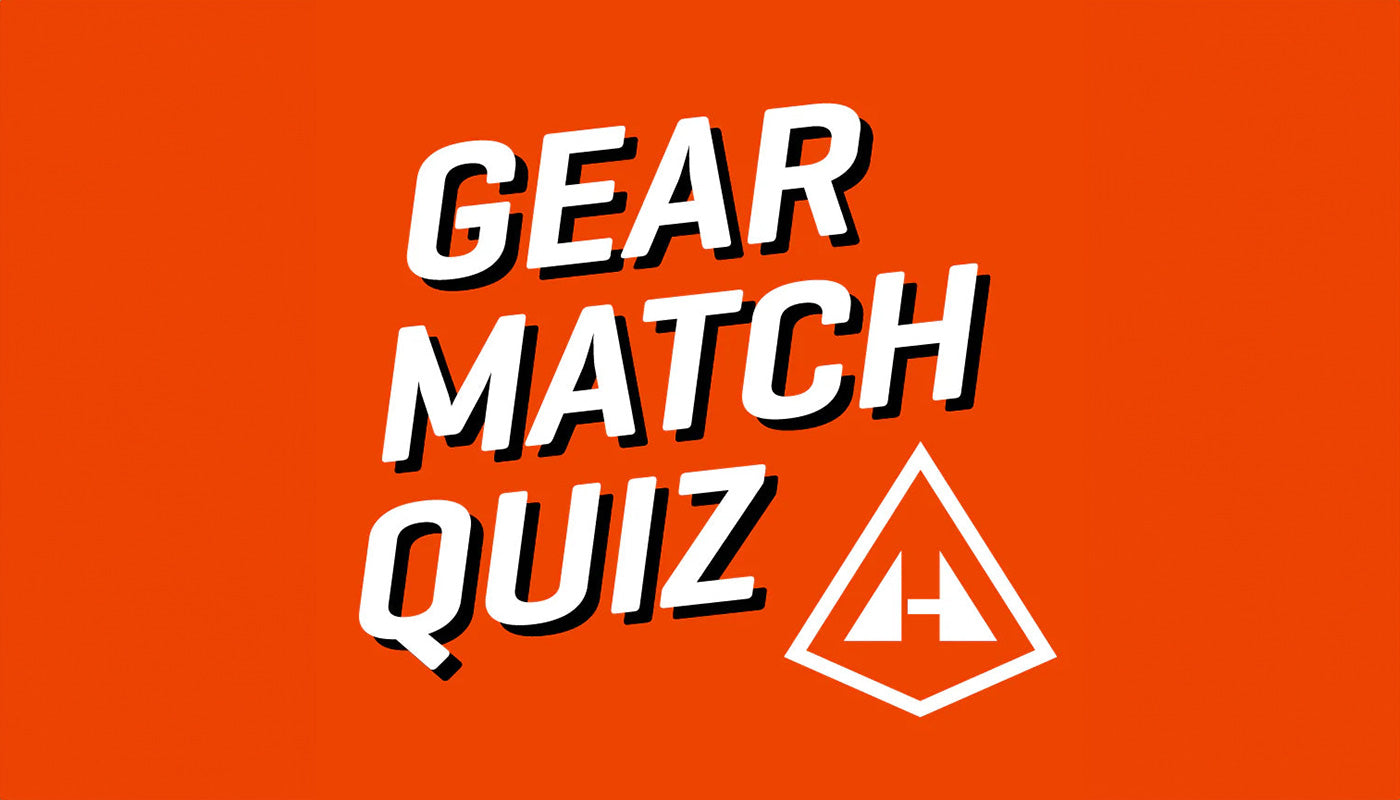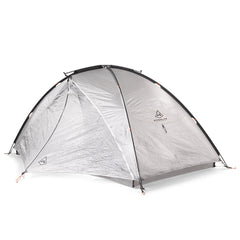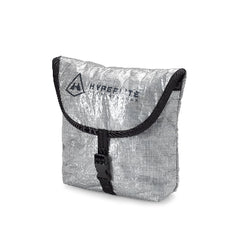What could be said about the importance of a quality sleeping bag or quilt that wouldn’t be universally understood? There’s a lot at risk with a tired body and mind in the wild. The near-universal temperature rating system for bags can be subjective to each user, so for the sake of this symposium, we’ll consider sleeping bags or quilts that would be used in conditions that most users would consider “reasonable.”
Shapes and insulation types are also personal choices, so we’ll let our panel here make a case for their favorites, and let you wrap up what’s best for you.
MIKE ST. PIERRE
HYPERLITE MOUNTAIN GEAR // CO-FOUNDER + CEO
Outside of the temperature rating, you have two design choices here. A fully enclosed sleeping bag with a zipper, or a quilt which does not have a zipper.
A high-quality ultralight one of either style will be built with 800-950 fill down. Some are constructed using water-resistant fabrics and there are even companies using waterproof down. If you have a good shelter, I’m not so sure I’d spend the money on waterproof down.
One critical piece to include with your sleeping bag is an ultralight stuff sack or pod to store it in. You always want to ensure that your sleeping bag is going to be dry and stay that way. If it does get wet, take an extended break or lunch and dry it in the sun. On many trips, I like to pull out my sleeping bag and let it air out over a lunch break to dry any moisture from perspiration that may have built up throughout the night. This will ensure you are getting the most out of the R-value of your sleeping bag – something that becomes important the colder the temp’s dip. Wet down becomes useless.

SAMUEL MARTIN
THRU HIKER // BACKPACKER // PHOTOGRAPHER // @SPMARTIN_I never felt comfortable sleeping in a mummy bag. As a proud stomach sleeper, the hood was forever getting in the way, and the zipper was somehow always in my face. When I learned about quilts, I knew I had to give them a chance, and three years later I haven’t looked back. Quilts have taken the ultralight community by storm in the last few years. For many they offer more possibilities and freedom from a standard mummy bag.
While thru hiking the Pacific Crest Trail this last summer, I carried the Katabatic Gear Alsek Quilt. It’s rated for 22°; however, I added an ounce of down so a true rating would be 19° - 20°. Katabatic designs their quilts with functionality in mind. An overstuffed collar keeps warm air from escaping up top while the elastic reinforced back keeps the quilt snug against your sides. While some cottage makers overstate their temperature ratings, Katabatic has a reputation for being conservative and understated. I’ve slept in sub-20 degrees with the Alsek and been quite comfortable. While on the PCT, I cowboy camped 55 of my 99 days on trail, and some mornings I would wake up with frost covering my bag while still being toasty warm inside. From the materials Katbatic uses to the thoughtfulness behind their pads attachment system, it’s clear that they take great pride in what they sell.
Katabatic makes all of their quilts in Colorado, USA. And they stand behind their craftsmanship.

LIZ "HANDSTAND" KIDDER
THRU HIKER // WORLD TRAVELER // @LIZKIDDER
I ended up with an 850-fill down mummy bag from L.L. Bean because of a recommendation from a past thru hiker. It was super warm, lightweight, and fit me perfectly. I run cold and 15° was absolutely necessary for me. Great design and durability, not a single malfunction, rip, or issue with it. I usually sleep all over the place, so the mummy bag was somewhat restricting at first and took some getting used to, but it definitely kept me warmer! It also has a dual-zipper, so you can open up the bottom of the bag if you need some airflow down there. And it even has a pocket inside that zips up so I could keep my phone in there on cold nights and I knew exactly where to find it! LOVED THAT! I should also mention I had a Cocoon Thermolite Silkweight Mummy liner— it added a few extra degrees of warmth on cold nights, or on warm nights I would just sleep in the liner (like a sheet) with my open bag on top of me (like a blanket). It also kept my sleeping bag really clean because I was just inside the liner. I could wash the liner easily in town (as opposed to trying to wash the down sleeping bag), and the liner also doubled as a nice laundry bag!

MATT MORELLI
THRU HIKER // PHOTOGRAPHER // @WHERETHEHELLISMATT
The Enlightened Equipment Revelation 30° Down Quilt was an eye-opening piece of gear for me. The weight savings outweigh the slight loss in comfort, and the EE brand’s ability to customize quality products opens a lot of weight saving avenues, as well as personal flair.
My experience with quilts first began on the Appalachian Trail when I got a MAC Gear 40 Top Quilt designed for hammockers, but I found it perfectly suitable for ground sleepers as well. MAC Gear is great because they are inexpensive and fairly light, but I wanted something more, and Enlightened Equipment is just that; a lot more. In March, I bought their convertible model, The Revelation, with a 10D Nylon exterior and 7D interior, 850 fill down, and a 30° rating, in regular width and long cut. During the Greater Yellowstone Traverse, I opted to leave the weight of the pad attachment straps at home and just tuck the quilt as best as possible, bringing me to a weight of 17.78 ounces while in a Roll-Top Stuff Sack.
I have found quilts to be the superior piece of gear for ultralight minded, three-season hiking when compared to sleeping bags. I love my quilt and it is my first suggestion to those who are willing to give up minimal comfort for a significant drop in pack weight. Even so, I believe there are obvious downsides and flaws to my quilt.
In my experience, I found the pad attachment straps to be unnecessary, but I have met others who refuse to leave the trailhead without them. The only time I have ever wished to have the straps were on one night cowboy camping in the Wind River Range when a storm kicked up gusts strong enough to blow my quilt off my body and sand in my eyes. If you sleep in a tent, then it may not ever be an issue for you. The H.E. models made by Enlightened Equipment are specific to hammocks and therefore don’t have pad straps or clips, which save weight and will likely be my next investment. The ability to open the quilt or have a closed foot box has rarely been a needed function but can certainly be nice for its multi-functionality. In the future, I will be getting the closed foot box model, The Enigma.
I really do enjoy Enlightened Equipment’s products and will continue to use and recommend them for many years, but their temperature rating system is kinda crap. I usually recommend going 5 to 10 degrees colder than expecting when choosing a bag, but for Enlightened Equipment I recommend 15 to 20 degrees colder. Even with the pad attachment system, it is relatively easy for drafts to chill you, especially if you move a lot at night. I have spent nights in the low 30’s with a warm pad and all my layers on and still found myself shivering.

KRYSTIAN "SNAP" REPOLONA
THRU HIKER // PHOTOGRAPHER // @HIKES.CAMERA.ADVENTURE
If I expect the temperature lows to be ~ 40 F I will use my Enlightened Equipment Revelation 30° Down Quilt. Using the quilt design cuts down on weight significantly by eliminating the bottom portion of the sleeping bag where normally insulation would be compressed by your body.
Currently, for winter time work, I use a Mountain Hardwear Torch 0° synthetic sleeping bag. I chose a sleeping bag set-up for the winter time, because I toss and turn in my sleep and would frequently wake up cold using the quilt set-up in the ~30-degree range. For my work, we aren’t allowed to use enclosed tents and instead make tarp shelters, and for this reason my sleeping set-up is more exposed to the elements. Using a bivy system helps reduce this exposure, however moisture from condensation eventually builds up throughout my work week. I prefer a synthetic bag for my work environment because I don’t always have the ability to dry out my bag during the day and a soaked down bag would be a safety issue in the field.

JESSICA KELLEY
BIKEPACKER // PACKRAFTER // @JESSI_GOES
I’ve done a couple winter races in Alaska (White Mountains 100 and Iditasport), and my Marmot Col has served me well for super cold temps. It’s rated to -20F, yet it managed to serve me pretty well during a -40F night bivvied on the frozen Yentna River. I snuggled into the Col while wearing an expedition-weight down jacket, and while I wouldn’t say I was warm, I made it through the night without getting hypothermia or frostbite. I even got a few hours of sleep!

BETHANY "FIDGIT" HUGHES
THRU HIKER // WORLD TRAVELER // HER-ODYSSEY.ORG
Your first decision is synthetic or down. Synthetic is ideal for wet climates, whereas dry climates and extreme cold call for down. Your next decision is going to be a sleeping bag or quilt? Quilts have the advantage of being lighter, and sleeping bags have the advantage of being cozier. I recommend Feathered Friends for a quality down bag, or Katabatic Gear if you are looking to shave a bit of weight.

NICK "CLICK" REICHARD
THRU HIKER // PHOTOGRAPHER // @NICHOLASREICHARD
Once you use a quilt you never go back, or something along those lines. I pulled the trigger on a Feathered Friends Flicker UL 20° Quilt which had a zipper and open foot box. It was the warmest most comfortable sleeping bag I’ve ever used. I find myself being able to unzip it all the way and use it as a blanket on warm nights which saves me from having to look for a summer bag. Size, weight, degree rating are the most important factors when selecting a good sleeping bag. I don’t believe cost should be considered before all others because this one piece of gear is extremely valuable to the safety of your backcountry hike. I would recommend saving money in other areas of your gear list and making a wise investment when it comes to your sleep system. You won’t regret it.

JOE CRUZ
BIKEPACKER // WRITER // EDITOR @ BIKEPACKING.COM // JOECRUZ.WORDPRESS.COM
I don’t miss having a sleeping bag in the slightest. The oft-repeated commendation for quilts is that, since a full bag’s insulating material under you will get compressed and serve no useful function, one may as well just eliminate that part. There’s a reasonable point there, but I pack a quilt primarily for its unmatchable versatility: If the night starts out less extreme, I can fall asleep half under the quilt and then just gather it around me later when temperat























